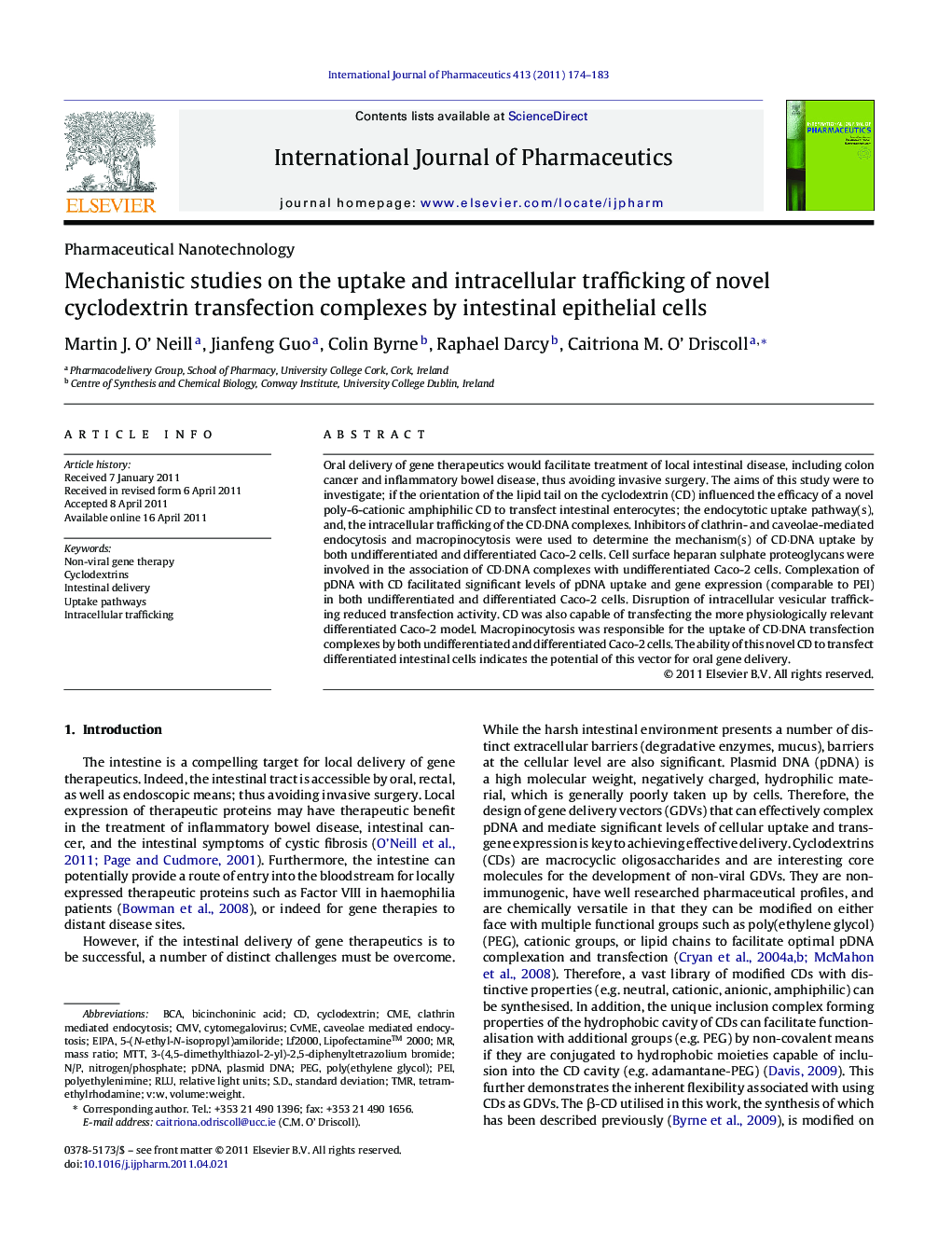| Article ID | Journal | Published Year | Pages | File Type |
|---|---|---|---|---|
| 2503231 | International Journal of Pharmaceutics | 2011 | 10 Pages |
Oral delivery of gene therapeutics would facilitate treatment of local intestinal disease, including colon cancer and inflammatory bowel disease, thus avoiding invasive surgery. The aims of this study were to investigate; if the orientation of the lipid tail on the cyclodextrin (CD) influenced the efficacy of a novel poly-6-cationic amphiphilic CD to transfect intestinal enterocytes; the endocytotic uptake pathway(s), and, the intracellular trafficking of the CD·DNA complexes. Inhibitors of clathrin- and caveolae-mediated endocytosis and macropinocytosis were used to determine the mechanism(s) of CD·DNA uptake by both undifferentiated and differentiated Caco-2 cells. Cell surface heparan sulphate proteoglycans were involved in the association of CD·DNA complexes with undifferentiated Caco-2 cells. Complexation of pDNA with CD facilitated significant levels of pDNA uptake and gene expression (comparable to PEI) in both undifferentiated and differentiated Caco-2 cells. Disruption of intracellular vesicular trafficking reduced transfection activity. CD was also capable of transfecting the more physiologically relevant differentiated Caco-2 model. Macropinocytosis was responsible for the uptake of CD·DNA transfection complexes by both undifferentiated and differentiated Caco-2 cells. The ability of this novel CD to transfect differentiated intestinal cells indicates the potential of this vector for oral gene delivery.
Graphical abstractFigure optionsDownload full-size imageDownload as PowerPoint slide
